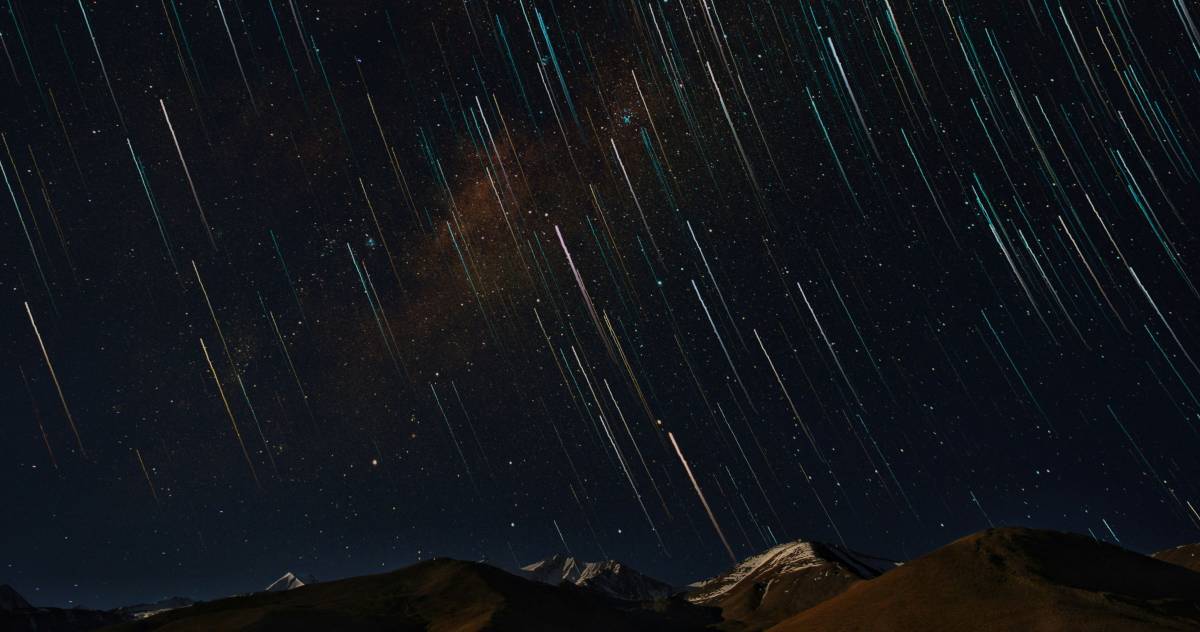UAE: When and where to watch Lyrid Meteor Shower 2025 this April
Rare fireballs and meteor trails could be visible in early morning hours

DUBAI: Stargazers in the UAE can mark their calendars for one of April’s most captivating celestial events – the annual Lyrid Meteor Shower.
Visible from mid to late April, the shower will reach its peak on the night of Monday, 21 April into the early hours of Tuesday, 22 April.
This spectacle, one of the oldest documented meteor showers in human history, promises a memorable experience for sky-watchers across the Emirates.
Lyrid Meteor Shower
The Lyrids have been observed for more than 2,600 years, with the earliest recorded sightings dating back to 687 BC in China. The shower originates from debris left behind by Comet C/1861 G1 Thatcher, which takes over four centuries to complete one orbit around the Sun.
As Earth passes through the comet’s dusty trail each April, the tiny fragments enter our atmosphere at speeds of around 49 kilometres per second, creating bright streaks of light in the night sky.
Best viewing time
Astronomers recommend watching the Lyrid meteor shower during the late evening hours of 21 April and continuing into the early morning of 22 April. The shower’s radiant – the point from which the meteors appear to originate – will rise before midnight and climb higher in the sky toward dawn. Under ideal conditions away from light pollution, viewers may see between 10 to 20 meteors per hour. However, due to the nature of the Lyrids, this number can occasionally surge to as many as 100 meteors per hour during brief outbursts.
For the UAE, the Moon’s phase during this time will be a thick waning crescent, illuminated at approximately 39 percent. It is expected to rise at 2:03am, meaning the darkest hours between midnight and moonrise offer the best opportunity to spot meteors before the moonlight starts to interfere. Experts recommend finding a location far from urban lighting – such as desert areas around Al Qudra, Al Razeen, or mountain ranges like Jebel Hafeet – for optimal viewing.
Fireballs & meteor trails
While the Lyrids are not the most prolific shower in terms of meteor count, they are known for their unpredictability and occasional bursts of brilliance. Some meteors leave glowing ionised gas trails – known as persistent trains – that can linger for several seconds after the meteor itself has vanished. Others, known as fireballs, are unusually bright meteors that briefly illuminate the sky and can even cast shadows.
The chance of witnessing a fireball or persistent train makes the Lyrids especially intriguing despite their modest hourly rate. These luminous surprises tend to occur without warning and are best appreciated in a dark, moonless sky — a scenario that partially aligns with this year’s lunar conditions.
Viewing tips
Experts from the Dubai Astronomy Group advise allowing the eyes 20 to 30 minutes to adjust to the darkness. Avoiding screens and bright lights can significantly enhance visibility. Unlike many celestial events that require binoculars or telescopes, meteor showers are best observed with the naked eye. Simply lie back, gaze at the sky, and allow the natural spectacle to unfold.
For safety, those venturing into remote areas are urged to bring sufficient water, warm clothing, and basic supplies. It is also advisable to inform someone of your location before heading out to secluded viewing spots.
The meteor shower’s active period extends from 15 April to 29 April, but its intensity peaks sharply during a brief window. This narrow activity span, compared to broader windows for showers like the Perseids or Geminids, means timing is crucial for catching the best show.
Comet origins
Comet Thatcher, the source of the Lyrid meteors, was discovered in 1861 and follows an elongated orbit that takes it approximately 110 astronomical units from the Sun – more than 16 billion kilometres away. It will not return to the inner solar system until around the year 2283.
Interestingly, the Lyrid meteor shower experiences strong outbursts roughly every 60 years, due to gravitational influences from planetary orbits that reshape the comet’s debris stream. The next significant outburst is predicted in 2042, though smaller fluctuations in meteor activity can still surprise viewers in off-years like 2025.
Pink Moon and more: What’s next?
Following this year’s Lyrid meteor shower, sky-watchers in the UAE can look forward to the Eta Aquariids in early May – another modest display with pre-dawn activity – and the much-anticipated Perseids in August, which could bring up to 150 meteors per hour under ideal conditions.
Meanwhile, April offers another visual treat in the form of the so-called ‘Pink Moon’, which will rise on the evening of Saturday, 13 April. While the Moon will not actually appear pink in colour, it will be a full micromoon – slightly smaller and dimmer due to its distance from Earth. The name “Pink Moon” comes from North American traditions, referencing the blooming of pink wildflowers in early spring.